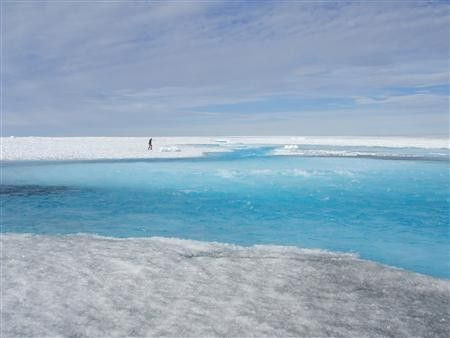Lakes Formed Under Ice In Greenland Could Be Pointing At Global Warming

Two lakes were discovered under the ice in Greenland in opposite coasts. New studies suggested that climate change had cut its way to the bottom of the ice, resulting in the formation of the lakes. The study has been published on Jan 21 in the journals Nature, an interdisciplinary journal of science, and The Cryosphere, an international scientific journal dedicated to research articles.
According to Live Science, the discovery of the two lakes would help the scientists understand how the surface meltwater in Greenland travelled through the ice. The lakes will also help the scientists forecast how the ice would respond to future global warming.
One of the lakes had filled and drained itself twice since 2011. The second lake is said to have enough water that could fill up 100,000 Olympic swimming pools. The second lake had been stable as ice for a span of 40 years before its meltdown in 2011.
Because of the gushing floods in 2011 caused by the meltwater, the lakes were spotted in Greenland. The water had flushed 50 kilometres to the sea and left behind craters in the ice that was above the lakes. The lakes were identified through high-resolution satellite images.
Michael Bevis is the head of the Geodesy and Geodynamics group in the Division of Geodetic Science at the Ohio State University as well as the co-author of the study published in Nature. Bevis said that if enough water had poured down into the ice sheet in Greenland so that the empty subglacial lake was to refill itself again and again, then there should be lots of latent heat released under the ice for a change in behaviour of the ice sheet.
Michael Willis is a glaciologist at the University of North Carolina and Cornell University as well as the lead author of the study published in Nature. He said that there was a mechanism for getting heat from the top of the ice to travel to the bottom of the ice. He thought that it was likely for such a thing to be happening at other places in the future.
Contact the writer: afza.kandrikar@gmail.com





















